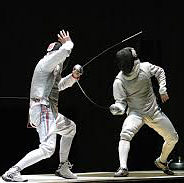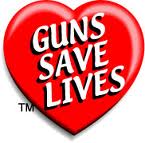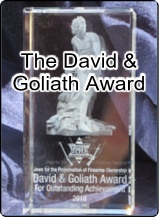

MORAL PANIC: Implanting anti-weapon
hysteria in future generations
![]()
By Claire Wolfe, May 18th 2014
JPFO writer contributor, © 2014.
 Moral panic.
Moral panic.
That phrase hit me this week with the latest anti-weapon idiocy -- North Dakota State University forcing its fencing club off campus because the blunted blades, usable only for sport, violated "weapons policy."
Well, such bigoted follies are hardly news these days. Not after we've seen students punished for butter knives and "gun-like" gestures. I suppose we should all be grateful that members of North Dakota's fencing team were merely cast out, and not hit by a SWAT team or investigated by Homeland Security.
What's worrying me are the larger issues embodied in that term: moral panic. I am seeing incalculable danger ahead.
So what is a moral panic?
In an Ashgate Research Companion, Charkes Krinsky writes:
A moral panic may be defined as an episode, often triggered by alarming media stories and reinforced by reactive laws and public policy, of exaggerated or misdirected public concern, anxiety, fear, or anger over a perceived threat to social order.
The term first appeared in print in 1830. The phenomenon didn't get a serious look from psychologists or sociologists until the 1970s. But moral panics have been around probably as long as civilization. They've certainly been around as long as there have been demagogues, hysterics, and rulers eager to take advantage of them.
And they are dangerous to life and freedom.
A history of hysteria
Some examples of past panics:
- In 1306, during the First Crusade (itself an extended moral panic), crusaders on their way to rescue the Holy Land from the infidel got detoured by moral panic before they ever got out of Europe. Whipped up by wild rumors that Jews were poisoning wells and committing other atrocities, in city after city, crusading mobs halted long enough to slaughter entire Jewish populations en masse.
 The Salem witch hunts were a perfect example of a moral panic. Shocked by the theatrical claims and apparent "demonic possession" of a handful of little girls, otherwise intelligent, respectable people temporarily lost all common sense and perspective. Although it took only a bit over a year to go from initial hysteria to deep shame over what they'd done, in that time 200 neighbors had been accused, 20 innocent people had been killed, and families and friendships ripped apart forever.
The Salem witch hunts were a perfect example of a moral panic. Shocked by the theatrical claims and apparent "demonic possession" of a handful of little girls, otherwise intelligent, respectable people temporarily lost all common sense and perspective. Although it took only a bit over a year to go from initial hysteria to deep shame over what they'd done, in that time 200 neighbors had been accused, 20 innocent people had been killed, and families and friendships ripped apart forever.- In the 1950s, the entire U.S. suddenly became obsessed with the notion of juvenile delinquency. This resulted in at least two sub-panics -- one of which we can now laugh at, the other we're still living with. Panic #1 was generated by a single psychologist, Dr. Frederic Wertham. He observed that the "troubled youth" he worked with liked to read comic books, especially the horror and superhero comics that were becoming increasingly popular. He concluded, on no evidence whatsoever, that comics caused the trouble -- and he touched off a nationwide anti-comic hysteria that ended up with (of all things) a Comics Code Authority. The other huge panic of the day was against "switchblade" knives. Because somehow those zippy knives were making those comic-reading JD's more dangerous. Even today, we live with the anti-knife laws passed during that hysteria.
- More recently, the 1970s-90s terror of "Satanic ritual child abuse" destroyed many innocent lives and ruined reputations and livelihoods.
In fact, the 1980s and early 1990s are now sometimes called the Era of Moral Panic. They spawned numerous destructive hysterias, some of which gained tragic traction, and some of which were (fortunately) laughed off -- like the one over the game Dungeons & Dragons.
Unfortunately, the Era of Moral Panic is not over. Since then, there have been many panics. A few have been debunked almost as quickly as they arose. (Look up "jenkem" and "rainbow parties"; I can't link to either because they're too disgusting for JPFO's standards.) A few panics gained traction, then died. Some are still blighting us.
We are in the midst of a moral panic against the very concept of weapons (and people outside of government who wield them).
But one scary thing about moral panics is that hardly anybody recognizes them for what they are until everybody finally snaps out of the hysteria.
The panic against weapons and those who use them has been going on at least since the early 1990s (and probably began in the 1960s). My great fear is that a) it's getting worse and b) it's infecting the minds of an entire generation, so that the current crop of children and young adult students will arrive "in the real world" with the assumption -- implanted by the current hysteria -- that weapons themselves are actually evil.
 If you're six years old and your classmate gets suspended for having an inch-long G.I. Joe gun in his backpack, you're likely to draw a deep-seated conclusion that guns carry some almost-supernatural power to commit atrocities. If, besides that, you have no exposure to real guns for target shooting, hunting, or other sports, and you're never taught anything about the realities of gun safety, you're likely to hold onto that superstition as an adult. Even if you eventually realize that your little classmate was a victim of hysteria, the message that guns are eeeeeeevil remains at some level of your unconscious self.
If you're six years old and your classmate gets suspended for having an inch-long G.I. Joe gun in his backpack, you're likely to draw a deep-seated conclusion that guns carry some almost-supernatural power to commit atrocities. If, besides that, you have no exposure to real guns for target shooting, hunting, or other sports, and you're never taught anything about the realities of gun safety, you're likely to hold onto that superstition as an adult. Even if you eventually realize that your little classmate was a victim of hysteria, the message that guns are eeeeeeevil remains at some level of your unconscious self.
And now that fear of weapons is spreading to tiny pocketknives, table knives, and the epees of fencing clubs.
It's spreading even to people wearing tee-shirts depicting weapons or promoting pro-gun groups.
It's spreading even to rural areas, where self-reliance, including the presence and use of weapons, ought to be part of the culture.
Signs of moral panic
Moral panics begin with the perception that "something is wrong" in society.
But something is always wrong in society. This ain't paradise. It doesn't even matter if the evil in question is on the wane. The panic over weapons has spread even as violent crime has dropped. All that matters for a panic to go on the rampage is the perception.
Next, someone identifies a "cause" of the wrongness and promotes it.
It doesn't even matter if the "cause" is real, or if it has anything to do with the problem. In the case of comic books, witches, and Jews poisoning wells, the entire ugly business was someone's ugly fantasy. Jenkem was never a first-world problem (and may not exist at all), and there were never any rainbow parties.
Weapons, of course, can do harm in the wrong hands. And that touch of reality keeps the current hysteria going like the Energizer Bunny.
In the old days moral panics were often promoted by a pope or a priest. Nowadays it's more often a talk-show host, a book writer, or a member of the media. (Time magazine is notorious for this.)
The resulting hysteria is entirely out of proportion.
 When butter knives and Pop-Tart nibbled into vaguely gun-like shapes are enough to give school administrators the vapors -- well, 'nuff said. But we also have more evidence of hysteria in the incessant cries that all guns harm "the children" and the very existence of guns (in non-governmental hands) "oppresses" and "victimizes" people. When a substantial minority of a population believes itself to be oppressed or victimized merely because some portion of the population possesses something, you've got a serious problem -- and haven't yet seen its culmination.
When butter knives and Pop-Tart nibbled into vaguely gun-like shapes are enough to give school administrators the vapors -- well, 'nuff said. But we also have more evidence of hysteria in the incessant cries that all guns harm "the children" and the very existence of guns (in non-governmental hands) "oppresses" and "victimizes" people. When a substantial minority of a population believes itself to be oppressed or victimized merely because some portion of the population possesses something, you've got a serious problem -- and haven't yet seen its culmination.
During a moral panic, it can be ineffective, even dangerous, to speak out.
During these moral hysterias, people know that the evil is real -- even when it's totally illusory. Those who call for reason are shouted down and may even be accused of being part of the evil. During a witch hunt, those who defend the victims or point out that the problem isn't even real are likely to find themselves the next accused.
Even those in authority who recognize they hysteria are impotent to stop it -- or sometimes don't want to stop it for reasons of their own. During the murderous rampages in the First Crusade, local bishops tried to protect Jews, even taking many into their own homes. Mobs eventually broke down the doors. At the same time, the military commanders leading the crusade knew they were supposed to stop the slaughter, but chose not to, either because of their own anti-Semitism or because they didn't want to seem at odds with their own rogue soldiers.
 In the present hysteria against weapons, gun owners are fortunately millions strong and able to be heard -- in certain areas. Yet our voices of reason are almost entirely shut out from the all-important venues of educational institutions and the mainstream media. When we try to speak the "guns save lives" message, we're simply shouted down. Because our opponents "know" that we're all just fanatical, dangerous, redneck, racist loons and they "know" that all weapons are so dangerous they should be destroyed.
In the present hysteria against weapons, gun owners are fortunately millions strong and able to be heard -- in certain areas. Yet our voices of reason are almost entirely shut out from the all-important venues of educational institutions and the mainstream media. When we try to speak the "guns save lives" message, we're simply shouted down. Because our opponents "know" that we're all just fanatical, dangerous, redneck, racist loons and they "know" that all weapons are so dangerous they should be destroyed.
Moral panics tend to die as abruptly as they arise. But they leave scars.
In February 1692, when the Salem witch hunts began, little girls throwing themselves on the ground, shrieking, and pointing fingers was enough to earn some poor victim a death sentence. By May 1693, when it ended, a group of girls tried the old familiar dramatics on a public roadway; their intended audience simply walked around them, feeling contempt and no doubt a lot of personal shame. They couldn't bring back the 20 dead. They couldn't heal their damaged communities.
Unfortunately, even after the panic abates, those who buy into hysterias don't usually recognize what happened. They don't reflect on, or understand, their own part in the events. They don't change their own fundamental psychology or recognize the underlying nature of all panic phenomenon. On the contrary, when one panic ends, another often gets whipped up -- and believed -- just as quickly. Sometimes the same people will drop the old crusade and take up the new one in a heartbeat.
If Jews aren't the cause of all of society's problems, it must be witches or heretics. If comic books aren't the cause of "troubled youth" it must be drugs or porn or role-playing games. If "troubled youth" aren't the problem ... well, then the problem must really be guns. Or knives. Or the blunted tips of fencing swords.
We live in the era where moral panics become policy.
 Rahm Emmanuel, former Obama chief of staff and current Chicago mayor, famously said, "You never let a serious crisis go to waste. And what I mean by that it's an opportunity to do things you think you could not do before."
Rahm Emmanuel, former Obama chief of staff and current Chicago mayor, famously said, "You never let a serious crisis go to waste. And what I mean by that it's an opportunity to do things you think you could not do before."
And that's exactly how moral panics work. When people perceive a crisis (whether or not one actually exists), they don't ask they hard, realistic questions (like, "Would banning 'assault clips' really reduce death rates?" or "Won't criminals -- being, you know, criminals -- just get weapons even after they're banned?" or "Would a 'no guns' sign actually stop a creep with murder on his mind?"). They just follow whoever points at a convenient target (guns, witches, switchblades, Jews) and get behind the most easy, obvious -- and tragically wrong -- solution.
This is how terrible laws get passed, how insane (but durable) policies get imposed.
So far we gun owners have managed to defend ourselves against the ongoing panic against our tools. We've even made some surprising headway.
But the panic goes on. The panic, in fact, increases as we appear to hold our own. And what are we going to do a few years from now when an entire generation that has been raised in terror, hysteria, and superstition about weapons -- grows up, votes, and starts running American institutions?
Was this information valuable to you? If so, please consider donating, becoming a member or renewing your membership, or buying a DVD, book, tee-shirt, or other gear at our JPFO store.
![]()




































